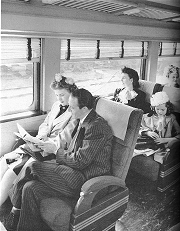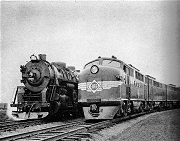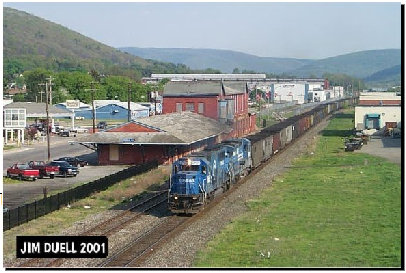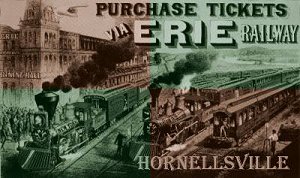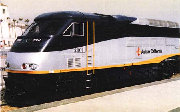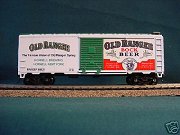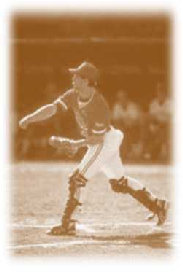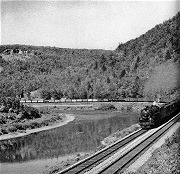New York
Hornell
The Erie Railroad
History of Hornell
The first half of the 1800's saw the explosive development of the railroads in the United States. These were the days of the true
entrepreneurs, financiers, progressive thinkers, and engineers that built the railroads. A railroad link between the Atlantic and
the Great Lakes seemed like a good idea to all involved (with the exception of the Erie Canal and barge operators), and it was in
pursuit of this dream that a group of investors from Jamestown received a charter in 1832 to build one. The New York and Erie Railroad
would be the longest railroad in the world at 483 miles, and it would pass through the Southern Tier of the state.
The Erie Railroad
The Floods
F59 Bullet
In 1852, Hornell was selected as the southern terminus of a new branch line to Buffalo, further enhancing Hornell's prospectus. In the same year, the Village of Hornellsville was incorporated. These events are not coincidental. The Erie shops were about the greatest thing to hit Hornell since cream cheese.
If anything broke on the Erie, they would send it to Hornell, where the engine shops alone could handle 20 steam locomotives at once. Now, as the fortunes of the railroad go, so go the fortunes of Hornell. And for many years the relationship was good. With the railroad came industry, and Hornell's fortunes grew along with the railroad. The population grew, and the village achieved city status in 1888. The name remained City of Hornellsville until 1906 when it was changed to the City of Hornell.
Speaking of Hornell Breweries
Visit Pat Wheeler's USBEERSTUFF.COM website for historical information on Hornell's breweries, including
many photos of old Hornell brewery labels and bottles.
The Erie and the City of Hornell hummed along for many years. Then, in the early 70's, the railroad industry suffered an economic meltdown, with many bankruptcies and mergers. The Erie had always been a freight line, so when the freight traffic drained away, a severe cash crunch ensued. And with that, the Erie filed for bankruptcy, one last time, on June 16, 1972. As though fate had not been cruel enough, on June 20, 1972--four days after filing bankruptcy, hurricane Agnes struck the east coast, hitting the Southern Tier particularly hard, including the Hornell area. Two hundred miles of track was partially washed out, especially between Hornell and Elmira. The estimated damages to the Erie were put at 11 million dollars. This sealed the railroad's fate, all hopes of survival now seemed slim.
There were several half-hearted attempts to save the Erie, by the millionaire Hunt brothers of Texas, the Santa Fe Railway, and the Chessie System among others. But ultimately, most of the assets of the Erie were disposed of by the bankruptcy court. Much of the rail system and rolling stock was passed to newly formed ConRail on April 1, 1976. The last assets of the Erie were disposed of by late 1992.
The Erie no longer stops in Hornell ending a 120-year run. The heady railroad days of Hornell are but history. A very sad turn of events for Hornell and all railroad lovers.
Conrail Passing Through Hornell Yards
Wild speculation enveloped the process of selecting both the eastern and western terminus of the railroad. Those who bet on Dunkirk in the west, and Piermont in the east, won fortunes. Once that was settled, the action moved to the track routing. Which towns would the track run through? The railroad certainly would cause each town that it passed through to explode in commerce and wealth, and so there was much incentive for doing "whatever it takes" to land the track in your town.
It isn't known what dealing went on with the decision to lay the track through Hornell, or what compelling reason there was to do so, but Hornellsville became a stop on the Erie Railroad. At the time, Hornell was just an unincorporated settlement. But Hornell would not just be another whistle stop. No sireee. The Hornellsville Yard would be the primary maintenance facility for the entire Erie line! The first shops were built in 1849, even before the track was laid.
Numerous presidents and politicians, luminaries of all sorts, the rich and famous, and just plain folk all passed through Hornell while riding the rails. The very first train to make the entire trip from Piermont to Dunkirk arrived in Hornellsville on May 15, 1851 to a tumultuous reception.
On board were President Millard Fillmore, and Secretary of State Daniel Webster, who reportedly rode in a rocking chair that had been affixed to a flat bed car--the better to view the scenery. While the politicians gave speeches, and bands played triumphant marches, the train changed engines and continued on it's way to Dunkirk, for yet another high-energy reception. These must have been exciting times.
The Woodburner Tioga - 1851
During this period, Hornell took on all the trappings of a medium size city--home to three hotels, three banks, five silk mills, several woodworking factories, a fairgrounds and a horse racing park, several breweries, a shoe factory, a tannery, and even an opera house. Hornell flourished, life was good.
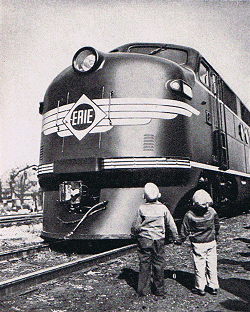
The Canisteo River has overrun its banks flooding Hornell and the surrounding area many, many times over the years. Usually minor in nature, these floods were nevertheless costly and a nuisance for everyone. However, on June 7, 1935, the heavy rains and swollen rivers proved too much and the ensuing flood devastated Hornell. With parts of the city under 6 feet of water martial law was declared and the Red Cross and other relief agencies moved in to provide assistance. Amazingly, only two people drowned, but hundreds of families were displaced, and the property damage ran into the millions. The governor of the state and other officials made a visit, promising the usual things to the victims. However, this time they were more than hollow promises. The City of Hornell, the State of New York, the Army Corps of Engineers, and other parties devised and built a system of levees, dams and retaining walls meant to keep future floods at bay. I have seen those dams get pretty full, but so far, they have succeeded in keeping Hornell dry. And the levees are greatly appreciated by the town youth, as they make great hills for sledding in the winter, and for cardboard "sledding" in the summer. I know this from experience.
This flood control system saved Hornell from any catastrophic effects of Hurricane Agnes in 1972, while some other parts of the Southern Tier suffered immense damages. Corning was particularly hard hit, and we already know how it affected the Erie Railroad. The "Great Flood of '72" caused 118 deaths, and more than $1.5 billion dollars in property damage. But Hornell survived with minimal damage.
Hornell and Baseball
Hornell seems to have an affinity for baseball. Professional baseball had an 80-year run in Hornell, beginning with the International Association in 1878, and ending with the Hornell Redlegs in 1957. The city hosted numerous teams and leagues over the years. Maple City Park was built in 1942, partly to host the newly franchised Hornell Pirates farm club. That stadium was destroyed in a fire and was rebuilt. It stood until the early 60's when it was demolished to make way for the new high school. The Pirates played in Hornell until 1947 when they were replaced by the Red Sox for a two-year run. In 1950 the Hornell Dodgers materialized as farm club of the Brooklyn Dodgers and totally reinvigorated baseball in Hornell. The 1950 Hornell Dodgers won the pennant by a margin of 10 1/2 games, and the 1951 winning team included player Maury Wills. Attendance at Maple City Park for those two seasons was 97,000 and 74,000 respectively. Wow. The Dodgers left in 1956, making way for the last team to make Hornell home, the Hornell Redlegs. The Redlegs moved to Geneva in 1958, thus ending the era of professional baseball in Hornell.
Baseball still lives on in Hornell with the Red Raiders (H.H.S), Little League, Babe Ruth and the New York Collegiate Baseball League, including the Hornell Dodgers.
Contact Info:
EMAIL:
URL:
This site was first published February 1999
Last update was December 16, 2007
This website was created and is maintained by
Philip J. June, H.H.S. class of 1966,
as a public service.
Some Rights Reserved 2007
If you enjoyed this history,
go here for more.










